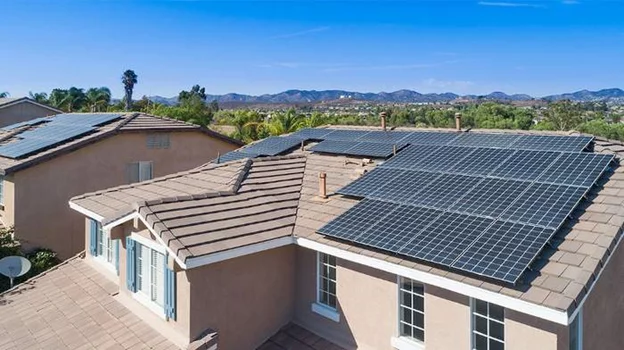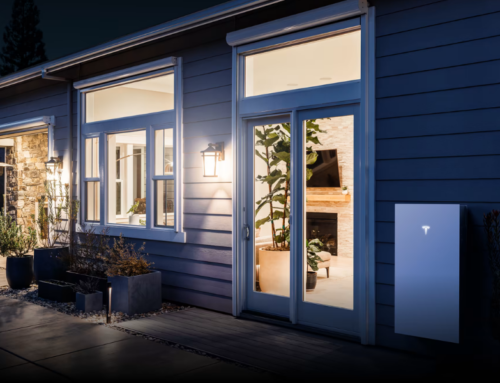Leaders in the fight for clean power sought to lift flagging hopes for a national green-energy transition last month after the disappointing failure of Build Back Better, a broad federal spending package that would have included investments in renewable technologies. Speakers at the virtual rally, hosted over Zoom by the Solar Energy Industry Association on Jan. 25, sounded notes of excitement and frustration that should resonate with Arizonans, who have seen the prospects of solar power rise and fall on the whims of politics. It’s worth tuning into national-level discussions like these, which show how closely our own state’s energy future is bound up with that of the nation at large.
The two senators who led the discussion, Tina Smith of Minnesota and Ben Ray Luján of New Mexico, emphasized the personal stakes involved in the fight for renewable energy, pointing to the year-round wildfire season in New Mexico and the need to keep energy prices low for people in North Minneapolis, who have borne the brunt of fossil-fuel pollution. Arizonans can certainly relate.
Climate change, which is caused by worldwide pollution of the atmosphere with carbon dioxide and other compounds released through burning fossil fuels, has been making wildfires larger and more destructive, the Arizona Republic reported in 2020. The proliferation of blazes has spread resources thin and even challenged the effectiveness of established firefighting techniques, said Victor Morfin, a fuels specialist for Coconino National Forest, to The Guardian newspaper in 2021. “Climate change has thrown us into a tailspin,” Morfin is quoted as saying by The Guardian. “We are having an unprecedentedly low success rate in our initial attempts to control the fires with strategies that have historically brought results.”
The increasing dryness, a major contributor to the wildfires, is itself a source of pain. Arizona has been in drought since 1996, with 19 of those years bringing below-average precipitation and every year except 1998 having above-average temperatures, according to the Arizona Department of Water Resources. Seventy-five percent of the American West is in severe drought, according to the U.S. Drought Monitor, a partnership between the U.S. government and the University of Nebraska. The years from 2000 to 2021 are the driest period since 800 A.D., with climate change driving 40 percent of the dryness, UCLA climate scientist A. Park Williams told the New York Times, explaining the results of a recent tree-ring study. The effects of this meteorological phenomenon are not just academic. Among the Arizonans facing immediate consequences are farmers, whose access to Arizona’s dwindling reservoirs is being slashed or cut off.
Switching to renewable energy sources like solar helps alleviate the state’s water shortage in two ways. First, by generating its own clean energy and reducing its demand for carbon-intensive power, a family causes less heat-trapping gas to be emitted into the atmosphere, resulting in less atmospheric warming and, therefore, less intense drought conditions for Arizona and other southwestern states. Second, a single Arizona household can save 10,000 gallons of water (the amount that would be used by a traditional power plant to serve that house) by switching to solar, according to a 2015 study by Herb Guenther, former director of Arizona’s Department of Water Resources.
Energy prices are perhaps the most pressing concern for most Arizona homeowners, a bitter irony given the state’s abundant supply of one of the most promising renewable energy sources of the future. Economic researcher Bjorn Lomborg warned in a Wall Street Journal commentary article earlier this year that the worldwide push to eliminate greenhouse gas emissions would cause continuing increases in energy prices around the world, including in the United States. After rising at a steadily increasing rate, home energy prices are set to keep climbing throughout the year at about a 3.4-percent annual rate, according to a recent projection by the U.S. Energy Information Administration.
Fortunately, there are ways for Arizonans to fight back against rising prices. One way is to take advantage of the government’s existing clean-energy initiative by securing a federal tax credit at the current rate of 26 percent of the cost of a solar system. The credit drops to 22 percent for systems in operation starting in 2023, so interested homeowners shouldn’t wait too long. The professionals at SunSolar Solutions can help with every step of the process and get a system up and running in time to secure the maximum tax savings.
Another way to fight back is by getting engaged in the fight to expand federal support for clean power, starting with participation in events like the SEIA virtual rally. The online discussion highlighted public policies that could bolster solar investment in the face of ongoing challenges, including price increases, tangled supply chains, and trade disputes. Our government could do a lot to counteract these headwinds, but until the political climate changes, any national effort to stop the Earth’s climate from changing is merely hypothetical.
Sen. Luján said he believes there is a path forward for federal legislation and that it runs through state-level action. He explained how bipartisan, grassroots organizing drove the creation of clean-energy policy in states around the country and ultimately led to the inclusion of strong federal investments in the current president’s infrastructure plan.
We at SunSolar Solutions agree with Sen. Luján that regular citizens can help drive change through political action. But we would add that political commitment can start with or be reinforced by practical economic commitment. When a family secures its independence from fossil fuels by going solar, it sends one more signal to the market that clean energy is the investment of the future, and it sends a similar signal to neighbors, to the power utility, and to politicians. By putting a solar system on its own roof, a family establishes a practical, concrete commitment to clean energy that outlasts any kind of purely abstract political support.
If you own a home, you can become part of Arizona’s—and the country’s—solution to the problems of swelling prices and dwindling reservoirs. Contact SUNSOLAR SOLUTIONS today at 602-773-6675 to have a design prepared for your home free of charge.







